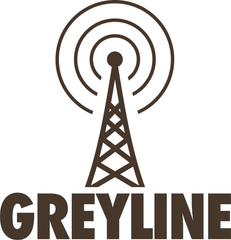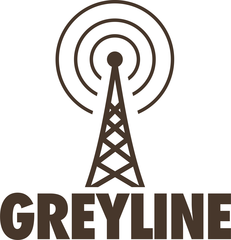
Some operators call us and say, "This thing isn't working, I've tried everything."
We routinely reply with... "this isn't the first call like this. Do you have a minute? Let's figure this out right now with a series of questions and answers."
- Do you believe you built the antenna correctly? (Yes, I followed the instructions)
- Is the Tuner in working order? (Yes, of course)
- Where did you install the Tuner and RF Choke? (Antenna, Tuner, and RF Choke is typically correct)
- Is the Tuner connected to ground? (Let's disconnect from ground for this test.)
- Is the Tuner at least 6 inches off the ground? (if not, find a wooden chair and comply for the test here please)
- How are the Coax and Tuner connected to the antenna? (Let's imagine the answer is, "correctly." Ie., Coax from the shack, then Tuner, Feedline kit, and the Antenna)
- Is the upper, longer radiator side of the antenna connected to the center conductor of your coax? (Yep, I was sure to check it)
- Let's go test it with your radio...
This is where most of the SWR or "won't tune" problems arise and resolve.
Tuning up the antenna+tuner circuit is a very important aspect for the success of the process.
Problem #1: The customer simply expects the tuner to tune when he picks up his microphone. Won't happen.
Answer: For most Remote Tuners (auto-tuners), you must apply power to the tuner for it to tune. Specifically, we take our customers through the process of politely asking them to conduct the following:
- Switch your radio to AM Mode
- Lower power output to 20-25 Watts
- Select the SWR meter reading (you'll be watching the tuner resolve the SWR in real-time)
- Press Transmit (AM, 20W) and hold it until the tuner completes its tuning cycle. This can take half a second to a few seconds.
This is where the customer says, "Um, wow, the SWR is 1:1 now!"
- Next, let's try to tune up on another band... repeat the above.
- Try another band, and repeat until you have tried all bands 6 or 10M down to 80 or 160M.
- When completed with the tuning process through the bands, let's put the power back to 100W and select your favorite Mode (SSB, CW, FT8, etc.)
- Remember: When changing bands, you'll want to switch to AM, 20W, and hit TRANSMIT. It will tune for you in a split second for you once again. Repeat every time you change bands.
Note: By taking the tuner through all the bands, you begin to train it for when you return to that band. On your return, it finds the tune rapidly. It memorizes the settings, so to speak.
Example: For our 24' DX Flagpole Antenna, we use an LDG RT-100 that can tune, for example, 15M immediately after coming off of 80M in 1/2 second flat.
Notes on the healthy SWR perspective:
Regarding SWR, 1:1 SWR is the goal, of course, and that's a good goal. Tuners can drift a bit. You may come home one afternoon and the Tune that was 1:1 in the morning but is now 1.3:1 or 1.8:1. This could be weather-related, or a squirrel hiding in your antenna (hope not). In any case, you can re-tune this band quickly by conducting the quick-tune process of (AM, 20W, TRANSMIT) once again and it will reset the memory to the newly Tuned SWR point.
Pro Tip: 1.3 or 1.5:1 and even 2:1 is fine for everyday operating. 1:1 is better but out of concern for details, doubtful it will keep you from working the station you are wanting to connect with and likely won't harm your equipment as it's a small amount of SWR. Retune at will, of course.
We hope this little How-To is helpful to you. It's okay not to know this stuff, especially with new folks joining the ranks. With a little push in the right direction, there is amazement and fun just a few minutes away. On that note, try this fun exercise to see how well your signal is getting out to the world. Yes, the entire world! (Totally normal for Greyline Antennas!)
TEST CQ - CW or FT8 guys can check their signal without needing to call a friend:
FUN SIGNAL EXPERIMENTS TO TRY AT HOME
You can get live signal reports on the bands, right now. Yep, there are hundreds, if not thousands of SDR radio stations tuning the bands that will relay live audio and live signal reports of your signal. All of this is done by remote ham radio operations, SDR, and RBN technology, listening across the entire ham band spectrum 24/7 just waiting to report to you, your signal. Try these services, for free.
Click to this page: Reverse Beacon Network RBN: (CW)
1. Find a clear frequency in the CW band
2. Call "[CQ CQ] [your-call] [your-call]"
3. Type [your-callsign] in the Spot Search window for HF
4. It will show you where you are heard around the world, LIVE.
PSKReporter (digital modes) This service is much like the Reverse Beacon Network with a visual map too.
WebSDR: (any Mode) After you have a sense of where you are being heard, you can select a location likely to hear you, tune the dial to your transmit frequency back home, call CQ from home, and hear your signal from, anywhere in the world!
Again, it's our pleasure to serve you with Stronger and Smarter Antennas d'Elegance.
Remember, Ham Radio is Fun Again!
Contact us with any questions you may have! We'll see you on the air soon...
73 Greyline Performance

RELATED ARTICLES
- LIST OF BENEFITS for Greyline Performance Antennas
- Common Questions from Ham Radio Customers
- 16' DX Flagpole Antenna and SGC-237 remote tuner works 160-6M (install pictures) at KJ7CWQ
- Beautiful Flagpole Antenna, regularly work DX (Africa, Europe, SA) with 60W on FT8 and CW at WJ8B
- "Happy XYL" in Pennsylvania: New Ham says "happy wife, quiet bands & loud signals! Going for my Extra."
- Do I really need a Tuner at the Base of my Greyline Flagpole Antenna and HF Vertical Antenna
- 28' HF Vertical Antenna in New Mexico reports "good reports about strong signals"
- 20' Flagpole Antenna, Bill in Florida one-calls XR0ZRC with 100W & runs the bands after 30-years off the air!
- 24' Flagpole Antenna: K7CWC Cliff in Washington (W7) is spotted around the World on his Greyline 24' DX Flagpole
